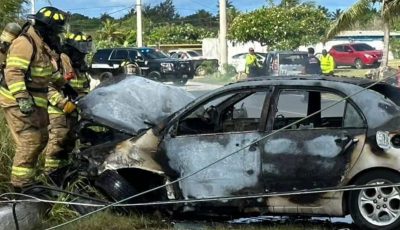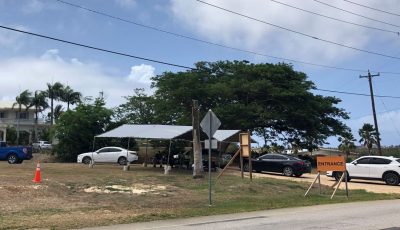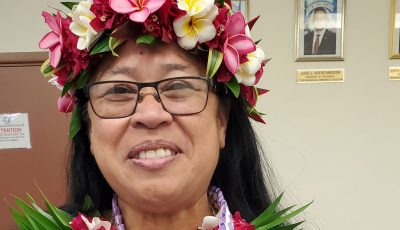Porsche
A Porsche sports car was parked in front of the JP Center in Garapan when I chanced to be there. My accountant neighbor was buying food from a mobile vendor and I told him that I liked his sports car. He did not miss a beat. He said that he drove it only on Fridays!
My leased proletarian fuel-saving hybrid Prius C was once sandwiched between a two-door black Lexus and a sporty Fairlady Z. Saipan is a car-driving island where public transport is not a purview of island development. The proposed Metro to include an elevated rail between Saipan and Tinian will not be an easy sell past dealerships of Japanese, European, Australian, American, and Korean cars, though an integrated resort developer threatens to build it (a promising Maglev, perhaps).
We now have days of plasticized mawr-mawr and pufferfish at hotel lobbies for tourists, staffed by Pinas linguists proficient in Hangul, English, Zhongwen, Nihonggo, Russian, and a spattering of German and French, in addition to their mother tongues (at least, one of the eight major languages in Pea Eye plus the Tagalog-based Filipino).
In China’s northeast, I lived in Shenbei (not exactly vintage Garapan, CK, or Tanapag since the center was recently built in ‘85) but a neighbor drove a Lamborghini, another a Maserati, and a third, a Ferrari. I took the Metro that was only two blocks away. Local workers had deeper pockets than this lowly foreign teacher.
While in Guam in the ’80s, a neighbor asked my daughter if her Dad was rich. “No, but he makes other people rich,” she responded. She grew up in Human Development Projects (HDPs) where the volunteers monastically detached from wealth made others rich by facilitating the community’s total development—economic, political, and cultural.
I was party to a group at a project in the New Territories Ship Kip Mei of HK. A Hakka fishing village, it saw economic potential of divesting their land, and did; the place now a skyline of high-rise apartments. I later drove a former fisherman’s Mercedes Benz in San Francisco where he moved his family after the village as a group negotiated the sale of the communal property to a developer.
A colleague got a Rolex watch for facilitating the process, much to the chagrin of many in our volunteer group. We wanted the community to stay intact and develop into a model community of our “assistive” design, a pitfall of intruding parties to someone’s native development direction.
The village did not hold the long-range picture the volunteers had on the future so they deliberated on the most immediate reward available. The colleague who received the watch continued to be faithful to his Religious Order vows even when offered a job of being the community’s facilitator to negotiate favorable terms for the real estate sale.
It was not till later that I discovered the Hakka folks were Han from Beijing’s northwest who had a yen for adventure, and quite nomadic in their travels, earning the name “Hakka” or “guest families.”
Some prominent folks are Hakka. They include the famous father of Modern China Sun Zhongshan (aka Sun Yat-sen to the West) of the 1912 China Revolution, to the Soong sisters of Shanghai, one married to Sun Yat-sen, and the another, to Chiang Kai-shek, the latter fleeing to Taiwan after Mao forces took over in 1949. Deng Xiaoping of Sichuan is Hakka, so is Lee Kuan Yew of Singapore.
Hakka Binondo in Manila hosted the first Chinatown in the world since the Qing did not regard commerce highly. I led Community Forum Canada in Prairie towns of Manitoba, Saskatchewan, and Alberta where all had Hakka restaurants. I did not order lunch from the menu but asked for leftovers the kitchen help had or were having; they made the food taste authentically Chinese rather than adopt to “Canadien” flavor.
Vancouver’s Chinatown in 1976 at the UN Habitat conference made me understand why Filipinos drive fancy cars even if they could barely afford them. A Zhongguoren in my Saipan complex blared his music when he drove in with a fancy SUV boldly licensed “Badass.” The tag was not meant to be pejorative. In fact, it was meant to be faddish, but in his case, he acted like one.
We tinkered in my youth under the hood or looked up the underside of a raised chassis, kept chrome fenders sparkly, and the top of the Chevy down. Now, teenagers alight to their folks’ cars, eyes glued to the smart phone.
A car is worn proudly as one’s persona extension, an item for the insecure to latch on to, an addiction. In Dong Bei where I live is Nippon Manchukuo’s car capital, Changchun, Jilin, China’s car center. You name the brand; they got it.
Cars. They are “us.” Or, rather, we become “them.” The Porsche is clearly on the upper echelon of car status, and in Germany’s autobahn sans speed limits, or the flat plains of Inner Mongolia, one just steps on the gas. With the speed limits on tiny Saipan, Porsche is clearly more for display than for transport.
Oh, and I drive mine only on Fridays, too!



























